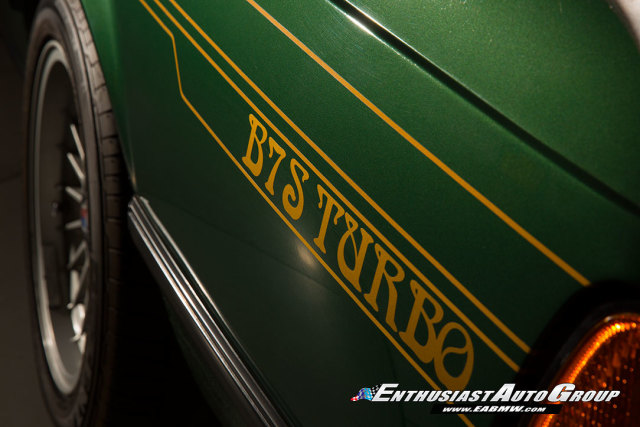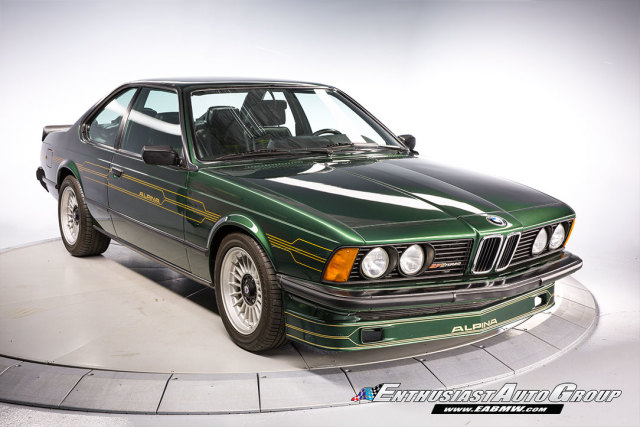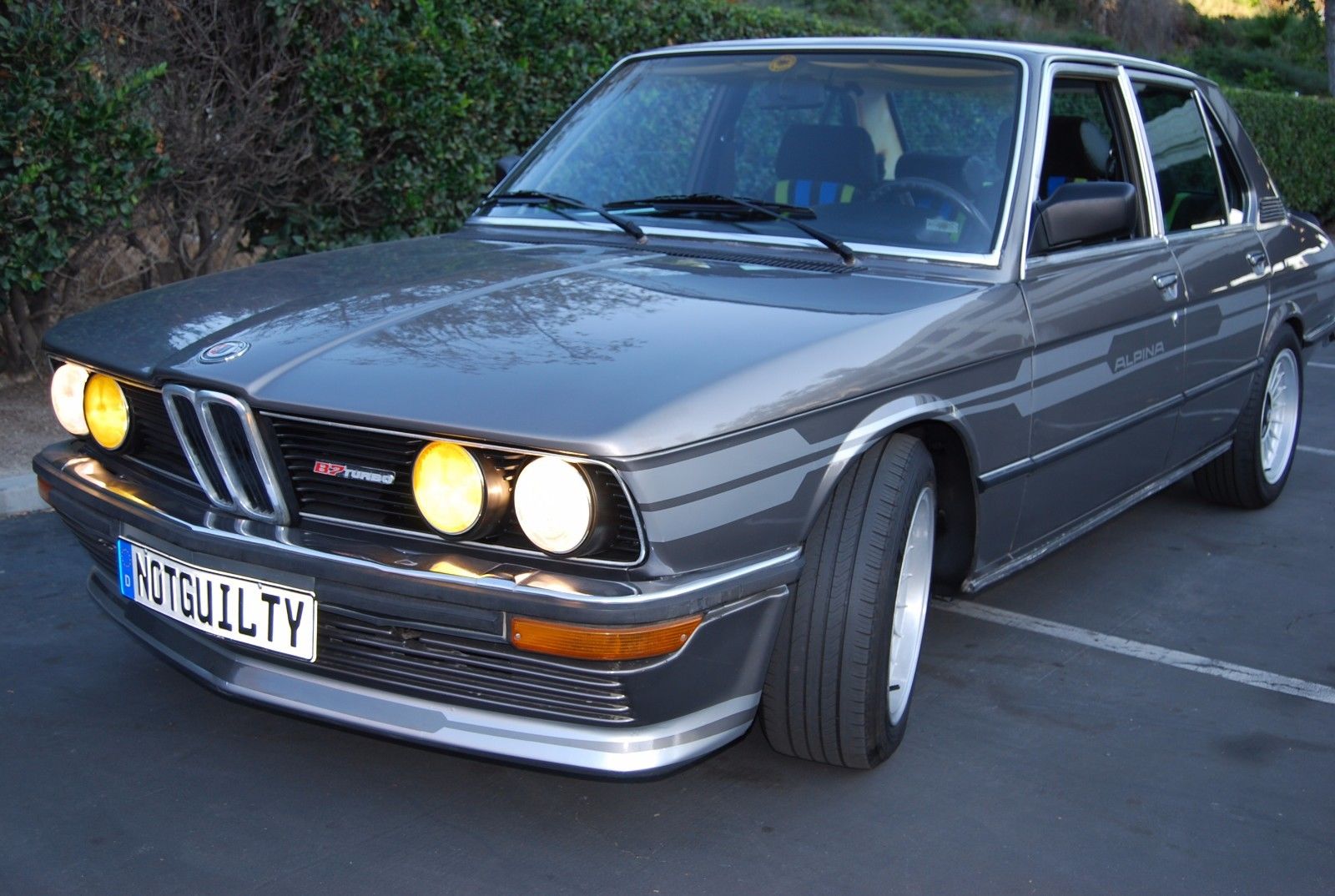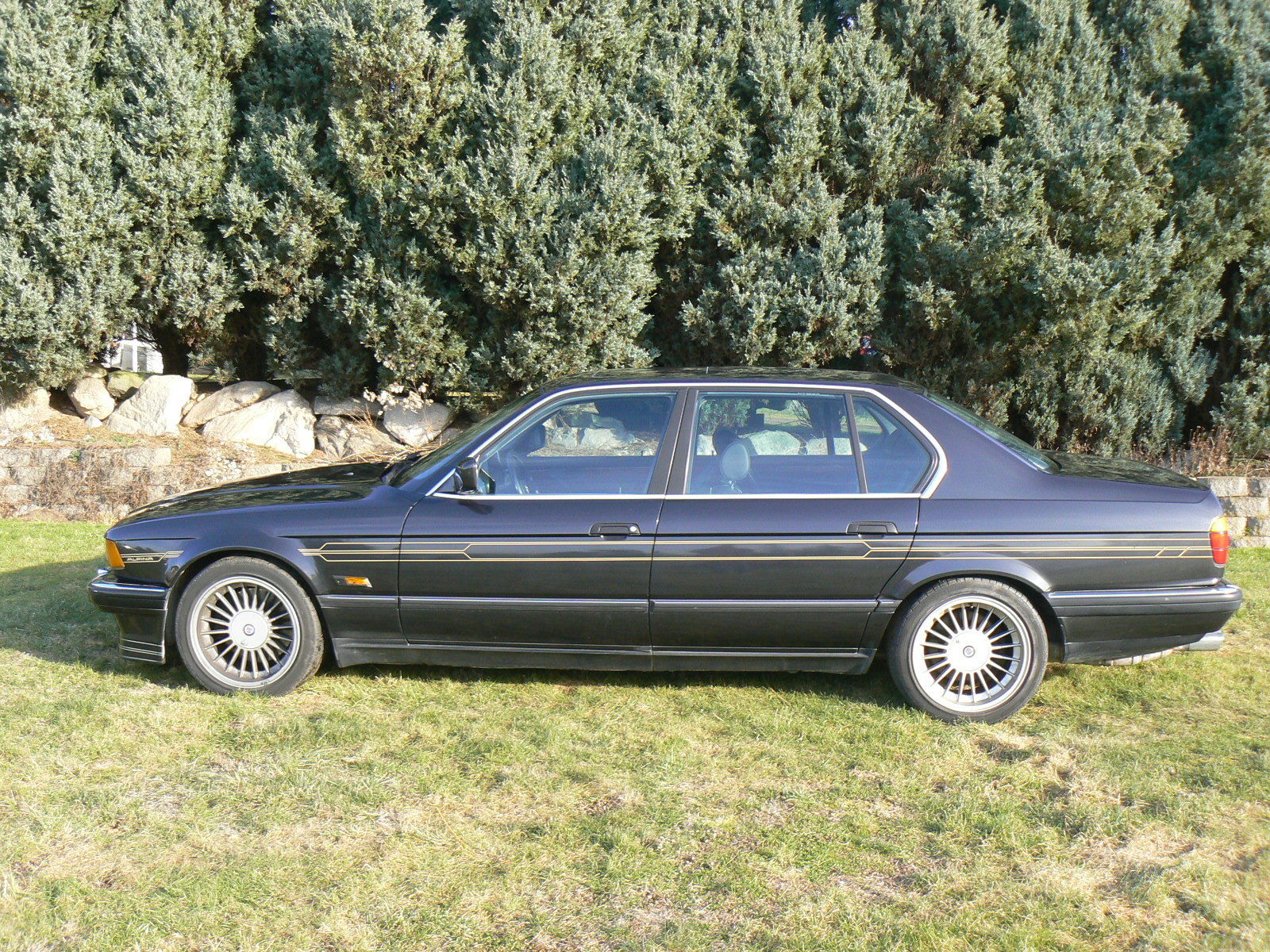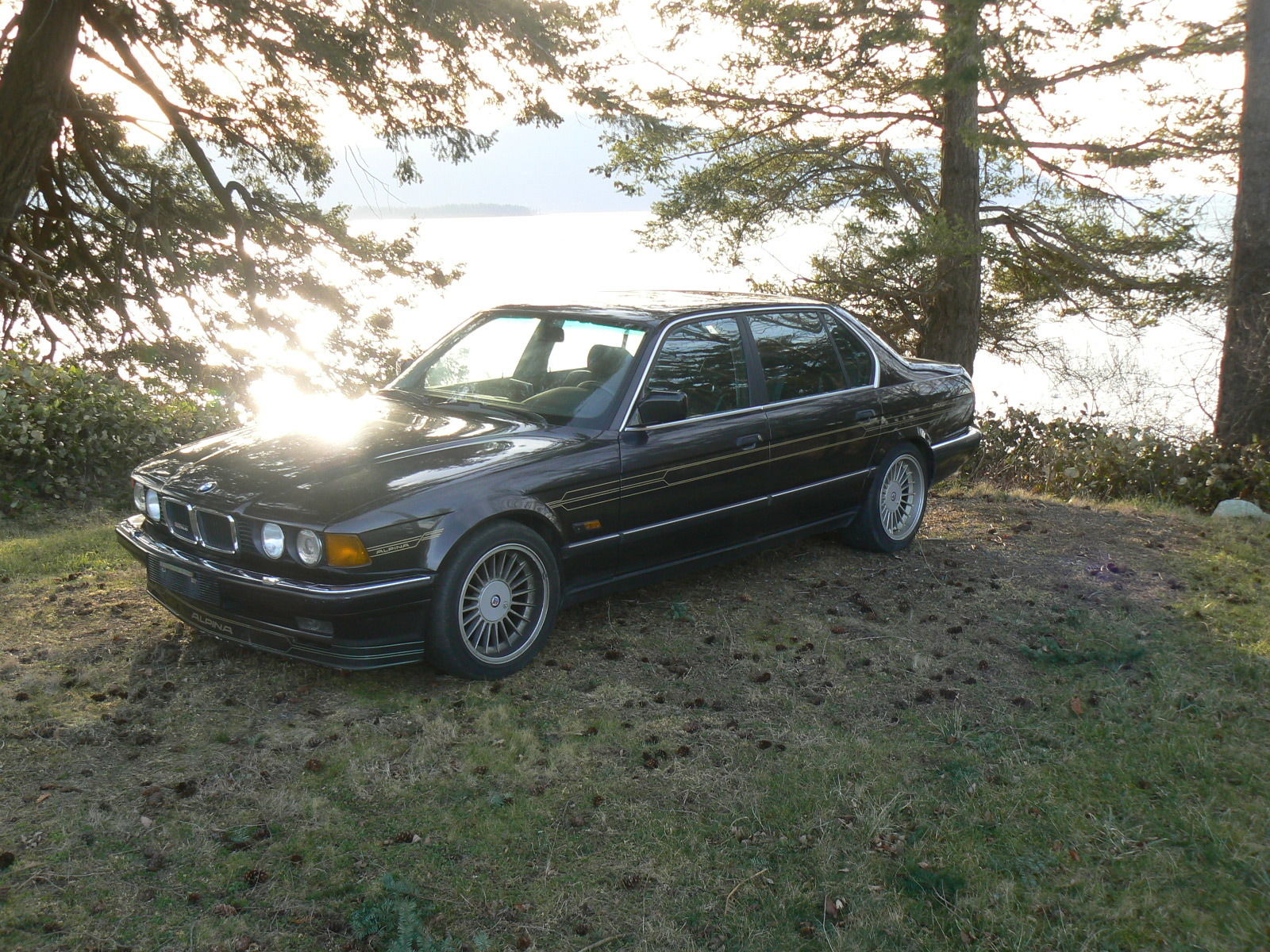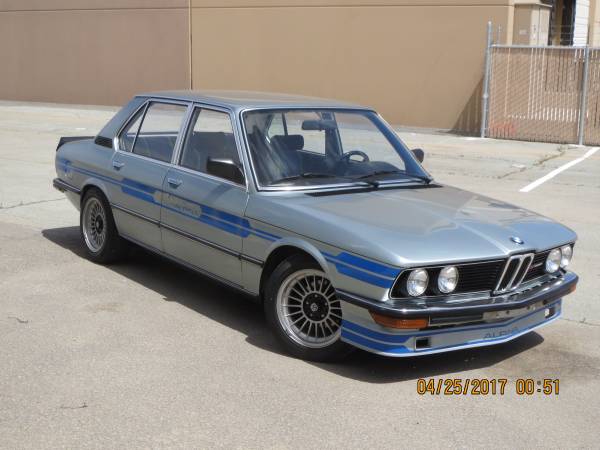Continuing on today’s green theme and moving up the pecking order a few notches from the E12 duo from the other day, here we have something of a monster. Alpina offered E24 fans a special treat with a turned up turbocharged variant of the 635CSi that was good enough not only to rival BMW’s own M6/M635CSi, but indeed to better it.
The M88 was already a bit of legend before BMW offered derivatives in the /3 and catalyst-equipped S38. With 256-286 horsepower depending on tune, it was about as good as non-exotic normally aspirated motors got in the 1980s. But Alpina had always had a knack for outdoing the cars their creations were based upon, so in went the turbocharger. The result was impressive in any form; the Turbo Coupe/1 was good for 300 horsepower and could match the acceleration of the M cars. But matching wasn’t enough, so Alpina upped the power with the B7S. Now up to 3.4 liters and good for 320 plus horsepower and nearly 400 lb.ft of torque, it was a car which could rip your face off anytime, anywhere. Like all Alpinas, they were lovingly crafted and full of exquisite detail work and limited to only 30 examples:
